Are you sick of pushing a mower around your lawn every weekend? If so, it might be time to consider investing in a robotic lawnmower and let the machine do the manual labor!
Robotic mowers have become increasingly popular over the past few years as technology advances. They’re efficient and low-maintenance — ideal for busy homeowners who want to keep their yards looking great without spending time mowing or money on maintenance.
In this comprehensive guide, we’ll discuss everything you need to know about robot lawnmowers: what they are, how they work, different types, cost, and tips for choosing the right one for your yard.
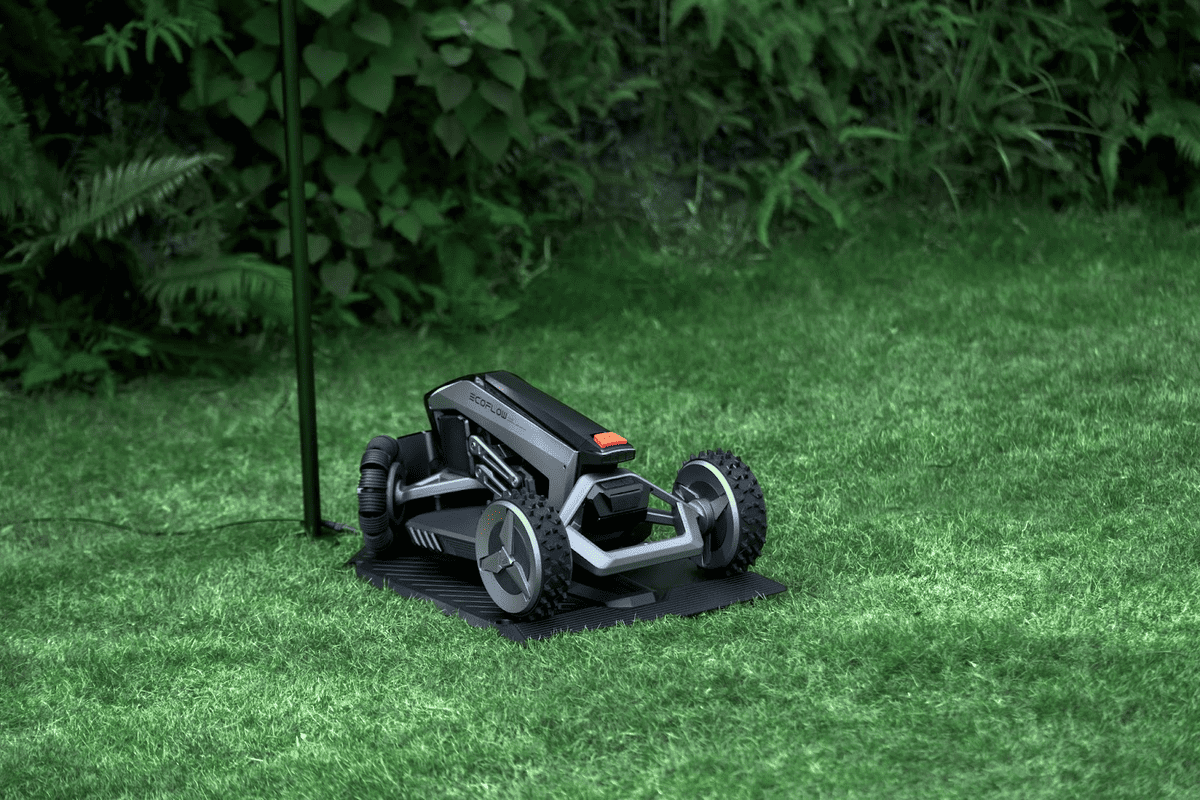
What is a Robotic Lawn Mower?
A robotic lawn mower is an autonomous machine that can mow your lawn without you. Thanks to advancements in sensor technology — like LiDAR — and artificial intelligence (AI), a robot can mow your entire yard. Automated mowers trim the grass within designated boundaries and avoid areas — such as gardens and flowerbeds — you want to leave undisturbed.
Most robot lawn mowers rely on a perimeter wire to keep them within appropriate bounds. But more advanced mowers don’t require this barrier. Using sensors and GPS, mowers like the EcoFlow BLADE can operate within an area that you designate without a perimeter wire.
Robot lawn mowers are ideal for anyone who doesn’t have the time to mow themselves or would prefer to spend their time doing something more rewarding. It’s more affordable (and reliable) than hiring landscapers. After you’ve recouped your initial investment, there are no ongoing costs. EcoFlow BLADE requires only minor maintenance to keep the robot in tip-top shape.
Because EcoFlow BLADE requires no manual labor, it’s particularly well-suited to people with limited mobility, elderly homeowners, people with disabilities, and more.
You might ask, “Since it’s autonomous, how can I program, manage, or track it?”
Most robot mowers are controlled with smartphone apps where you can customize mowing schedules, speed settings, operating areas, and more.
You have complete control with the app. The beauty of robotic mowers is that you don’t have to be behind the wheel — or even at home — for the mower to do its work.
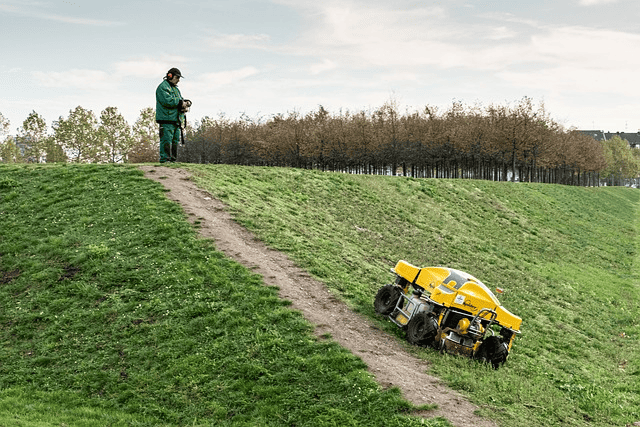
How Do Robotic Lawn Mowers Work?
Robotic lawn mowers run on rechargeable batteries and use sensors, wires, beacons, or GPS technology to detect and avoid obstacles. Their hardware includes blades or mulching systems to cut grass and disperse it on the ground — helping your lawn stay healthy with a process known as grasscycling.
A robotic lawnmower travels around your yard in a predetermined pattern, usually in straight lines. When it reaches the edge of your lawn, sensors will detect an invisible boundary wire you’ve installed and turn the mower around to continue its work. With smart mowers, the machine’s system will learn where to turn around to start the next pass-through.
A standard robot lawnmower uses perimeter wires that you can install underground or lay just above the surface. The wire boundary allows you to customize the mowing areas and cordon off areas like flower beds, landscaped mulch areas, ponds, and more.
Though this is the standard, innovation is changing how robot lawn mowers work. While most still rely on a physical boundary, new tech lets robot mowers like EcoFlow BLADE work within a virtual border.
Eliminating wires makes setup virtually effortless and enables you to set a more efficient mowing path.
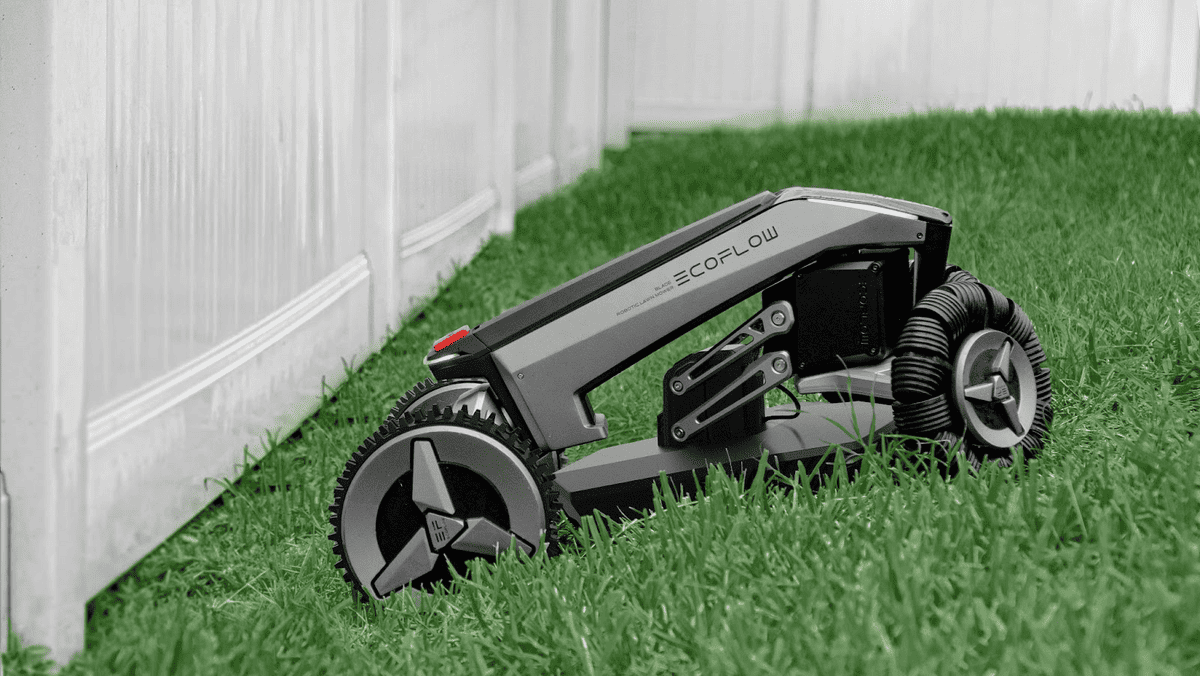
Types of Robotic Lawnmowers
Robotic lawn mowers come in a variety of shapes, sizes, and capabilities, but the primary distinction between them is the type of boundaries they use.
1. Physical Boundary Mowers
Physical boundary mowers rely on invisible wires for navigation that you must install before use. You can customize the area you want your mower to cut and help it avoid obstacles and designated areas, like gardens and flowers.
The perimeter boundary is typically a thin strand of wire encased in a PVC sheath. It starts and ends at the mower charging station. You can wrap it in your desired configuration to cover your entire lawn.
The charger sends a weak electrical current through the perimeter wire, creating a magnetic field around your lawn area where you’ve designated the mower to work.
A physical boundary mower’s built-in sensors detect when it nears the barrier. As the mower approaches the wire, the magnetic field sends the message to the mower that it needs to turn around for another pass.
Beyond the wire on the outside of your lawn, the wire creates a reverse magnetic field. If, for some reason, your mower ends up outside of its designated area, the mower system should immediately detect it and report it to you via the management app.
Some instances where the risk of the mower moving outside the boundary line is higher include steep slopes in the lawn, a power failure, defected perimeter wire, or a mower sensor failure.
2. Virtual Boundary Mowers
Virtual boundary mowers don’t have a physical perimeter wire restricting their movement. Instead, virtual boundary mowers use sensors and machine learning to determine where the boundaries are. The robot mower learns how to maneuver without needing a physical boundary.
The technology used to create virtual boundaries varies by manufacturer, but many use GPS, Bluetooth beacons, and machine learning algorithms to aid navigation. All virtual boundary mowers use sensors to detect physical landmarks, obstacles, and changes in terrain.
Virtual boundary mowers can learn their physical boundaries without any additional work from you. If your property’s landscaping layout changes, so will the boundary of your robot mower. The mower continues to “learn” and adjust to its surroundings thanks to AI and machine learning.
Perimeter wire mowers require a much more “hands-on” approach.

How Much Do Robotic Lawn Mowers Cost?
Robot lawn mowers are considerably more expensive than riding or push mowers due to their added value and advanced technology, but their prices range widely.
You can spend as little as $600 on a bare-bones model. A top-of-the-line robotic mower from some manufacturers can run you as much as $6k.
Most fall somewhere between the $2,000-$5000 range.
At the time of writing, EcoFlow BLADE costs $2,599 for the mower or $3,199 for the mower and lawn sweeper add-on (say goodbye to that rake!). Its award-winning design combines LiDAR, visual sensors, and proprietary X-Vision technology to recognize and avoid obstacles and operate within virtual boundaries you determine — perimeter wire-free.
How to Choose the Right Robotic Mower for Your Lawn
Consider the following factors to determine which robot lawn mower is right for you.
Cutting Height
If your grass grows quickly, you’ll want a mower that can cut it effectively. Most robot mowers can only trim as low as 30-50 mm.
The EcoFlow BLADE offers an industry-low cutting height of 20 mm but gives you the flexibility to cut as high as 2.9 inches if you prefer a lush green landscape.
Traverse Capability
Most mowers have small wheels in the front, less than 80mm in diameter. Minimal clearance helps cut your grass shorter but can also create problems when the mower gets stuck into debris.
For EcoFlow BLADE, EcoFlow has literally reinvented the wheel. It features innovative omnidirectional front wheels at a 200mm diameter, reducing resistance by 40%. The result is more control over grass length and better obstacle avoidance.
No more getting stuck on a rock.
Smart Features
Robot mowers with smart technology provide real-time tracking and reporting, app-controlled scheduling, as well as obstacle and rain detection.
Next-gen robotic mowers provide all this and more, including LiDAR and visual sensors to recognize obstacles and navigate steep terrains. It also includes editable boundaries you can customize via the app and automatically re-routes if it encounters debris.
Robust anti-theft features also help ensure the security of your investment.
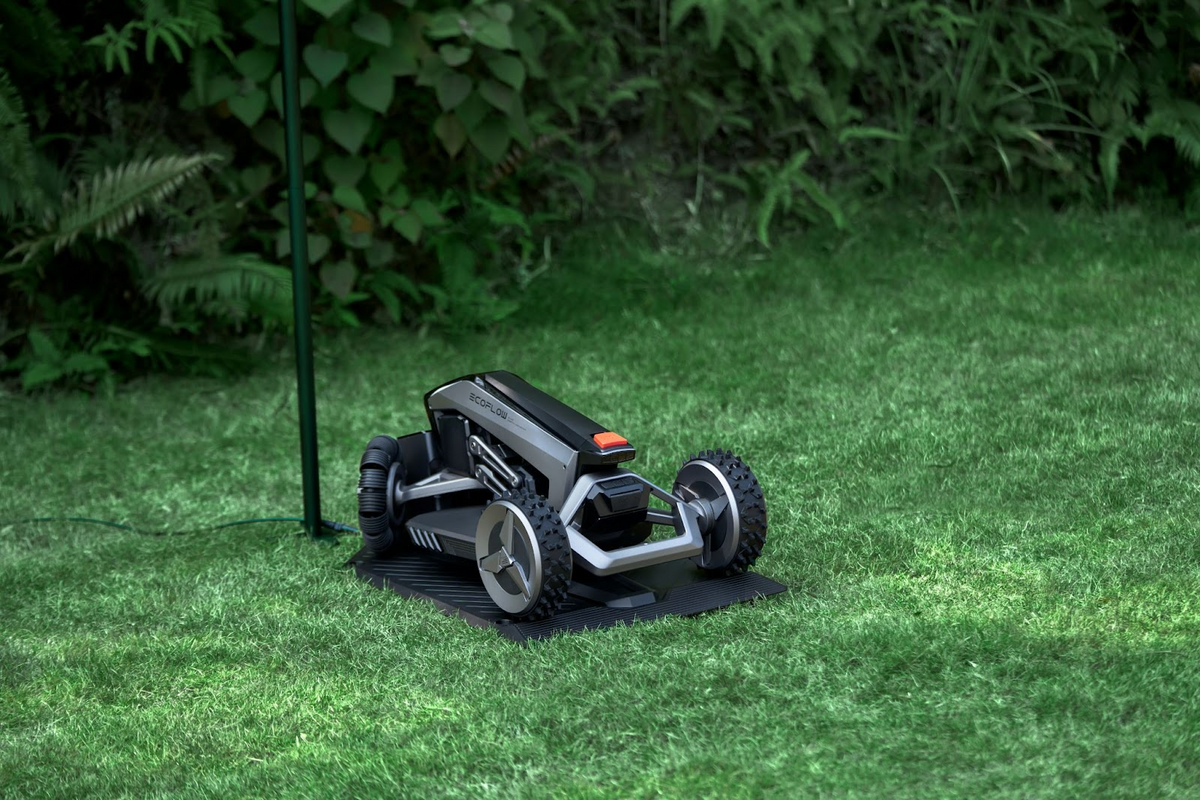
Battery/Power Source
Robot lawnmowers typically use a rechargeable lithium-ion battery and plug into a charging station between uses. The EcoFlow BLADE’s Li-Ion battery has an electricity storage capacity of 298Wh, enabling it to operate for four hours between charges. It recharges in as fast as 120 minutes when connected to its charging station (included).
Boundary Type
Choosing the right boundary type is essential. While perimeter boundary mowers are tried and true options, innovative virtual boundary mowers offer a more convenient alternative. By using GPS and visual sensors, the need for physical boundaries or wires is eliminated.
Organized Mowing Patterns
With physical boundary mowers, the wire keeps the mower in the designated area, but the machine mows in random patterns. It can leave your lawn looking messy and eats up unnecessary battery power.
Using GPS and X-Vision, robotic mowers like EcoFlow BLADE automatically plan an optimized zig-zag mowing route. The result is a cleaner, more evenly mown lawn — quicker and using less electricity.
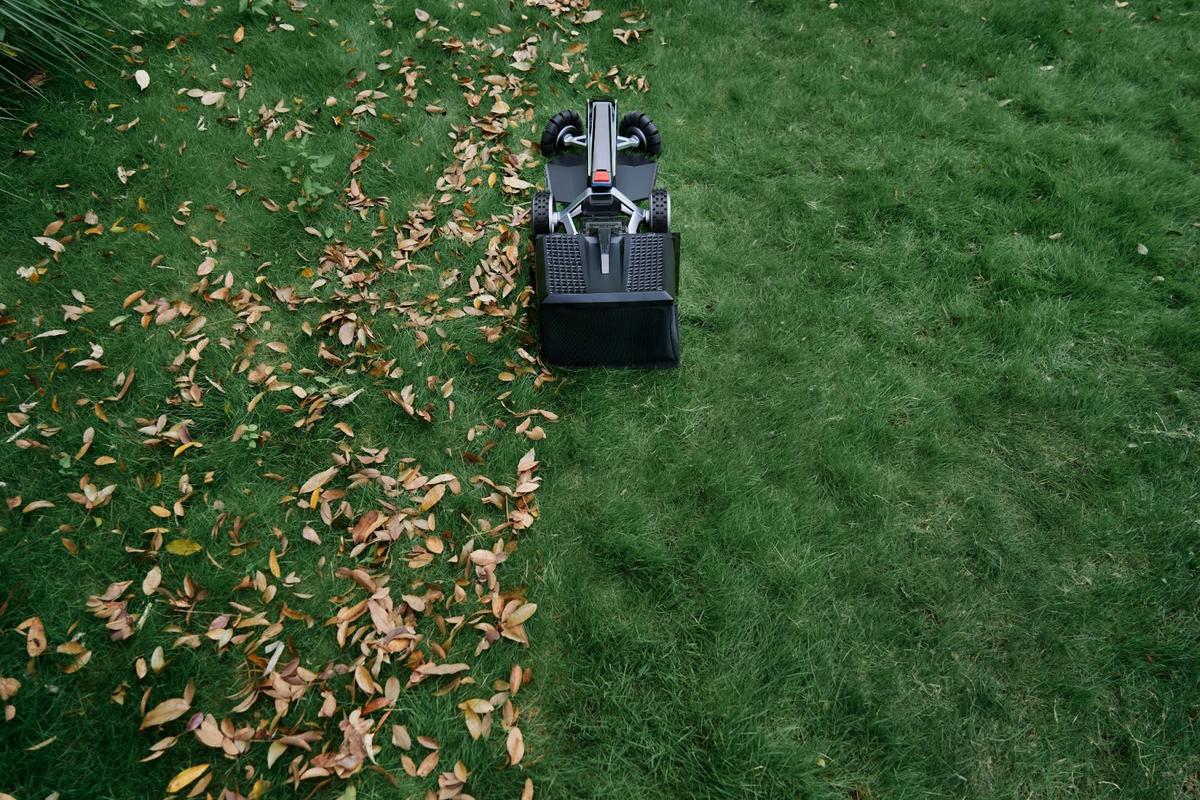
Lawn Sweeping
The main reason people buy a robotic mower is to eliminate a time-consuming task. All robotic lawn mowers can cut the grass, but only EcoFlow BLADE can sweep it too.
The optional lawn sweeper attachment detects and collects leaves, sticks, animal waste, and other detritus.
No other robotic lawnmower offers this function. EcoFlow BLADE is the first of its kind.
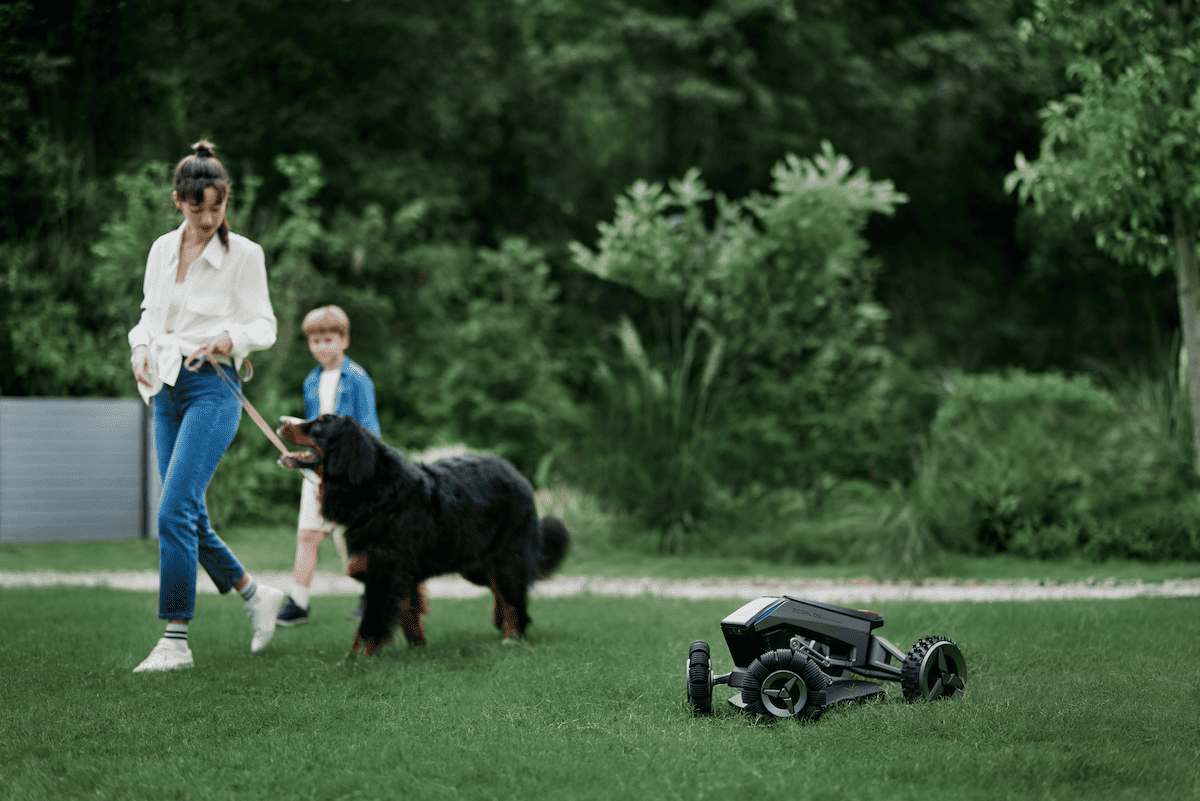
Frequently Asked Questions
Are Robot Mowers Worth It?
How much is your time worth to you? A robot mower is a worthy investment if you’re tired of wasting time cutting the grass, paying for landscaping, or if you have limited mobility. Robotic lawn mowers let you manage your lawn care and save you time, physical strain, and money over the long term.
How Much Does It Cost to Run a Robot Mower?
Once you’ve made the upfront investment in a robot mower like EcoFlow BLADE, it costs nearly nothing to run. Robot lawn mowers typically consume about 15 kWh of electricity per month. Depending on your local utility, that’s about $1- $5 per month — or between $12 and $60 annually.
Final Thoughts
Robot mowers take the hassle and physical labor out of lawn care.
Automated landscaping devices come in many shapes and sizes and offer different functionality.
If you’re looking for an intelligent robotic lawn mower with cutting-edge features to guarantee a beautiful, clean lawn, the wire-free EcoFlow BLADE is the ultimate solution for you.
